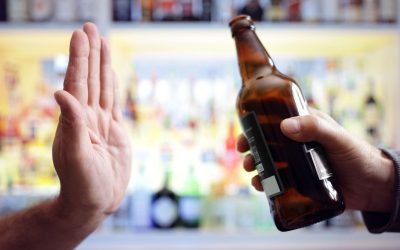Over time, the brain begins to rely on the substance to produce dopamine, making it difficult to experience pleasure from natural sources, such as eating, socializing, or exercising. This reliance on a drug for dopamine rewards is one of the key drivers in the cycle of addiction. It can be broken at any point, no matter how many times you’ve spun through it or how long you’ve been spinning. For example, when it comes to illicit drugs used to feel a ‘high,’ even one use is considered abuse. Three of the most important strategies for breaking the cycle of addiction include therapy, medically assisted treatment, and the development of a support system.
Paying for Treatment
We publish material that is researched, cited, edited and reviewed by licensed medical professionals. The information we provide is not intended to be a substitute for professional medical advice, diagnosis or treatment. It should not be used in place of the advice of your physician or other qualified https://fnaequipments.com/what-does-being-drunk-feel-like-the-stages-of-5/ healthcare provider.

State Rehab Guides
The substance or behavior takes over their thoughts, time, and energy. It’s no longer just about pleasure; it’s about avoiding the discomfort of not using. Addiction can lead to choose the correct cycle of addiction. severe physical and mental health issues, and it can be very challenging to break out of this stage without help. During addiction, the brain’s natural production of dopamine becomes suppressed, and without the drug, dopamine levels plummet, leading to intense cravings and withdrawal symptoms. This state is both physically and emotionally painful, which often drives individuals back to substance use to relieve their discomfort.
- Aftercare can include sober living, ongoing therapy sessions, and continued contact with staff from your treatment center.
- Researched, fact-checked and transparent articles and guides that offer addiction and mental health insight from experts and treatment professionals.
- Your call will be confidential, and you don’t have to commit to a program to learn more about treatment options.
- Knowing how addiction looks is a key step to finding treatment—and recovery.
Dependence Formation
Open discussions on addiction, especially with children, can teach the realities of substance use. When people know more about it, they can make informed decisions about their use. Mental health conditions, stress, and grief can amphetamine addiction treatment all trigger the need for soothing and distraction. Drugs and alcohol can serve as a tool for self-medication, providing temporary relief from symptoms of depression, anxiety, trauma, and others. Relapses occur more often than you might think,6 and they’re a common part of the addiction cycle. They typically have a trigger related to your environment and/or emotional state.

The 6 Stages of Mental Health Recovery
- Therapy can teach you how to regulate your emotions and how you respond to them.
- For example, when it comes to illicit drugs used to feel a ‘high,’ even one use is considered abuse.
- Support groups, like Narcotics Anonymous, help people with drug addiction issues.
- Each stage presents unique challenges and requires tailored strategies for recovery.
Maintain your profile by updating your photos, video links, treatment services, and contact details to ensure optimal visibility. Many support groups follow the 12-step model first developed by Alcoholics Anonymous. A person’s environment includes various influences, such as family, friends, and economic status.
Can you start addiction treatment at any stage of the addiction cycle?
This first use of drugs or alcohol might be all it takes to form an addiction due to the rush of dopamine to certain neurotransmitters in the brain. The individual may continue chasing that rush or high after the drug’s initial use (e.g., using opioids or even drinking alcohol). Our state-specific resource guides offer a comprehensive overview of drug and alcohol addiction treatment options available in your area. Addiction is a chronic, often relapsing disorder characterized by a compulsive need to seek and use the substance or engage in the behavior, despite the negative consequences. This stage is marked by a loss of control over use and significant changes in behavior and brain function.

